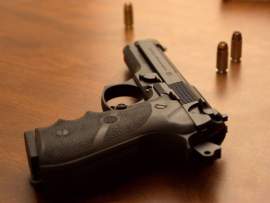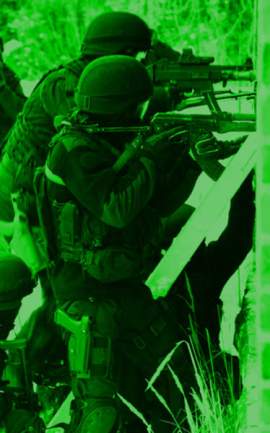
Guide to Automatic Weapons

Automatic weapons are often the most contentious items in any gun control debate. Because they hold tremendous destructive potential, and seem the least reasonable in terms of mere self-defense, automatic weapons are often targeted by gun control activists, and are just as passionately defended by gun rights activists.
There are some provisions concerning automatic weapons that greatly affect their legality in modern-day America. But first, a quick examination of exactly what an automatic weapon is will shed some light on the matter.
An automatic weapon, or automatic firearm, will fire continuously when the trigger is pulled, instead of firing just one shot per trigger pull. This differs from single-action revolvers, or pump-action firearms, for instance, which require a trigger pill to fire a single shot, and then an additional action in order to prime the gun for the next shot.
Automatic weapons differ also from semi-automatic weapons, which still retain the "one trigger pull, one shot" restriction on their workings, but have internal workings, such that the gun automatically loads a new cartridge and cocks itself. Fully automatic weapons, then, are the most dangerous of these three kinds, because they can fire the most rounds in the least amount of time.
The terms are a little indeterminate, if only because many times, those guns which are called "automatic weapons" are actually semi-automatic, such as most "automatic pistols" and most "automatic shotguns." This is often because fully automatic weapons are restricted, as one would expect, to just military and police forces in developed countries.
Most assault rifles, for instance, can switch back and froth between full automatic fire and semi-automatic fire, and most assault rifles are heavily restricted. Most assault rifles were banned altogether thanks to the Federal Assault Weapons Ban, but this law became defunct in 2004. There are attempts to reinstate it, however, whether for another temporary period, or permanently.
The Ban, though defunct, is important for the way it defined assault weapons, most of which were fully-automatic firearms which had been redesigned into becoming semi-automatic civilian versions. So while assault weapons were not actually fully automatic weapons, they were semi-automatic weapons, and were still more than dangerous enough to be banned, thought lawmakers.
In general, one can safely assume that any fully automatic weapon will be banned from civilian use. The more likely source of danger comes from powerful semi-automatic weapons, with features such as detachable magazines, folding or telescoping stocks, bayonet mounts, grenade launchers, and the like, all of which were enough to have the weapon banned under the Federal Assault Weapons Ban.
Fully automatic weapons, though some gun activists would like to have access to them, are generally considered too dangerous to be allowed for public use, but debate over the many variations of semi-automatic weapons will continue long into the future.
There is no doubt that a semi-automatic weapon is inherently more dangerous than a single-action weapon which requires both single trigger pulls per shot, and cocking or reloading the gun. But whether this danger is enough to justify limiting semi-automatic weapons severely remains an issue under great contention.
NEXT: Know The Automatic Gun Types




















